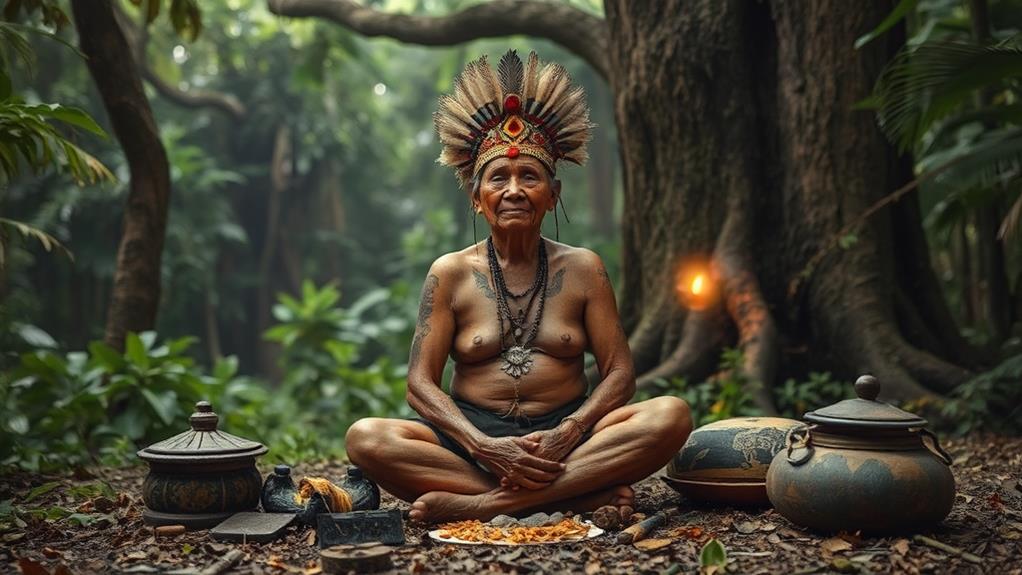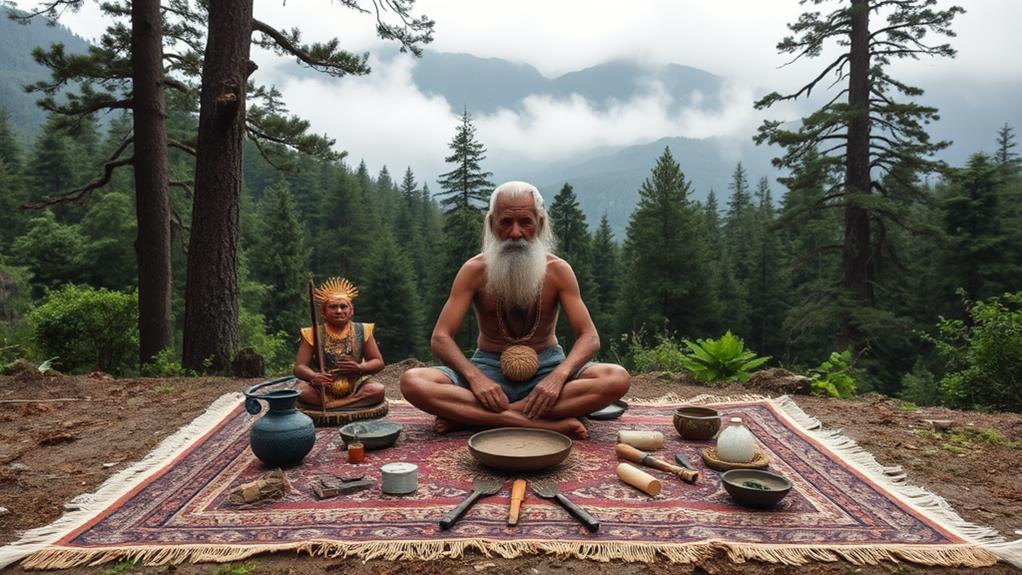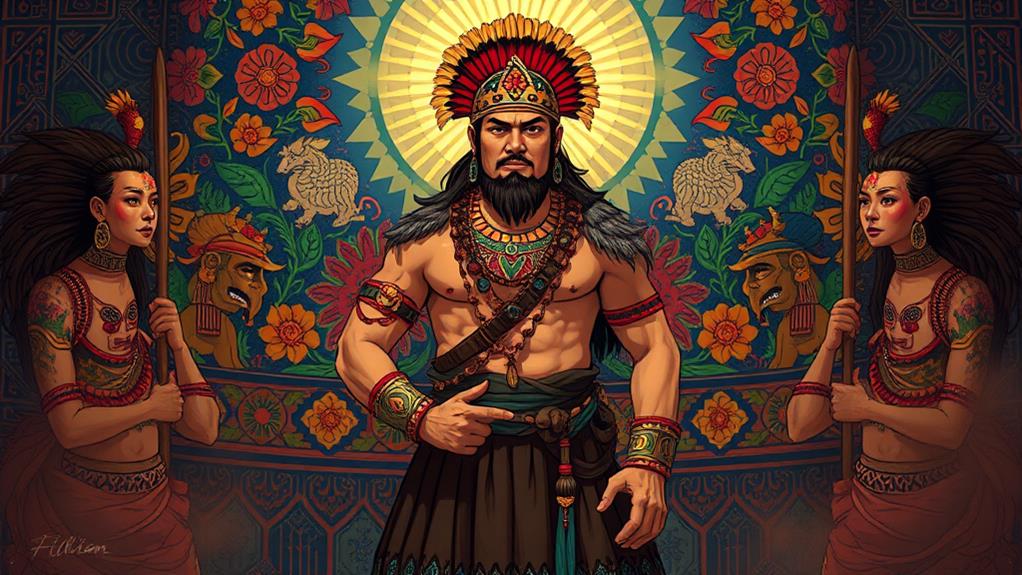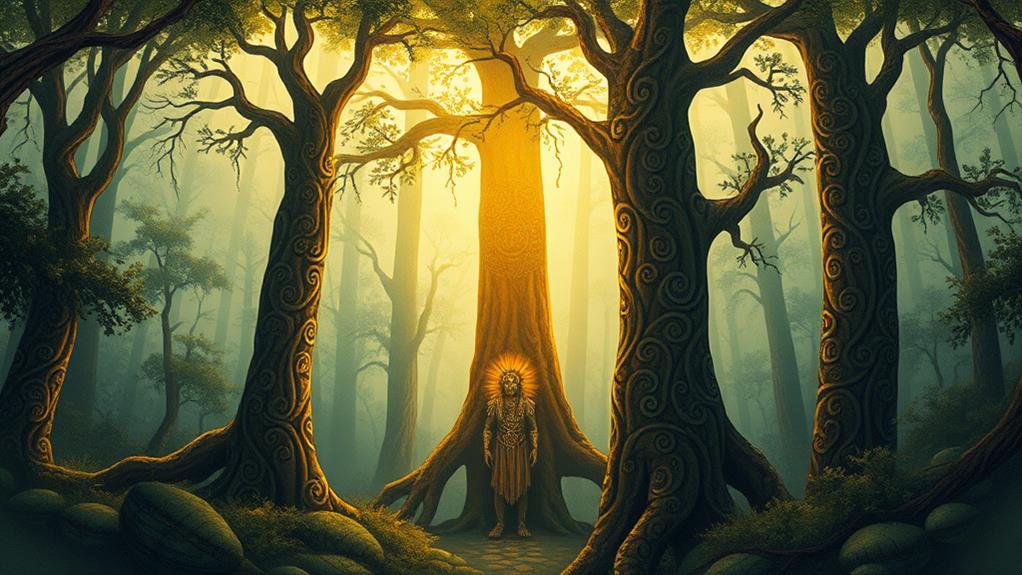Indigenous Religions of the Philippines: Preserving Ancient Beliefs
The indigenous religions of the Philippines are rooted in ancient beliefs and practices that have been woven into the fabric of daily life. Animism, the concept of multiple souls, and ancestral spirits shape the worldview of indigenous Filipinos. For example, the Tagbanwa people of Palawan believe in the existence of multiple souls, including the "buwan" which is the soul responsible for a person's emotions and the "kaluluwa" which is the soul responsible for a person's wisdom.
Traditional practices like Pag-anito, a ritual where shamans communicate with spirits to heal the sick or ensure a good harvest, demonstrate the reverence for nature spirits and deities. The Ifugao people, for instance, believe in the spirit "Kabunyan", who is responsible for the fertility of the land and the success of their crops.
These beliefs are intertwined with the environment and community, with many indigenous groups believing that their ancestors continue to live among them and play an active role in their daily lives.
However, these unique traditions face challenges such as cultural erosion, urbanization, and the influence of external religions.
Initiatives are underway to preserve these beliefs, including efforts to document and record indigenous stories, songs, and rituals. The Philippine government has also established programs to support and promote the cultural heritage of indigenous communities.
By understanding and preserving these ancient beliefs, we can uncover the rich cultural heritage that has been passed down through generations of indigenous Filipinos.
Ancient Beliefs and Practices

Indigenous Religions in the Philippines
In the Philippines, indigenous religions have long been an integral part of daily life, with ancient beliefs and practices forming the foundation of rich cultural traditions. These beliefs are deeply rooted in animism, where spirits, known as anito and diwata, inhabit natural elements and influence every aspect of life.
Rituals and Offerings
Rituals like Pag-anito involve communal feasts and offerings to ancestor spirits, underscoring the significance of ancestral guidance during pivotal life events. These rituals demonstrate the importance of honoring ancestors in indigenous cultures.
Multiple Souls
The concept of multiple souls is prevalent among various ethnic groups. Practices reflect the understanding that behavior in life affects one's afterlife journey.
For example, the T'boli people of Mindanao believe in having three souls, each responsible for different aspects of a person's life.
Sacred Spaces
Sacred spaces, often constructed from bamboo or rattan, serve as hubs for offerings and worship, highlighting the profound connection between nature and spirituality.
These spaces demonstrate the importance of nature in indigenous spiritual practices.
Superstitions and Divination
Superstitions and divination play a vital role in indigenous practices, with natural signs interpreted as omens.
Shamans serve as mediums to communicate with the spirit world, providing guidance and wisdom to their communities.
Nature Spirits and Deities
Balete trees are revered as abodes of diwata, nature spirits or deities that embody the forces of nature and environmental elements. These majestic trees are believed to be inhabited by diwata, which are integral to the worldview of Filipino ethnic groups, representing the natural world and its elements.
Diwata can be benevolent and protective, but they can also bring misfortune if disrespected, reflecting the animistic worldview where every aspect of nature possesses a spirit.
The concept of diwata intersects with the notion of anito, where ancestral spirits are venerated alongside nature spirits. This intersection highlights the interconnectedness of ancestry and the natural world. For example, sacred sites like balete trees and specific mountains are believed to be the abodes of diwata.
These sites are often marked by rituals and offerings to ensure harmony and respect between humans and nature spirits.
Honoring diwata through rituals and offerings acknowledges the importance of maintaining a relationship with the spirit world and the natural environment. Rituals and offerings, such as food and communal feasts, are ways to show respect and gratitude to diwata.
This reciprocity is essential in maintaining balance and harmony between humans and nature.
Rituals and Shamanic Traditions

Shamans in Indigenous Filipino Rituals
Shamans play a crucial role in indigenous Filipino rituals, serving as bridges between the spirit world and the community. These shamans, often female, specialize in various practices including healing, divination, and counteracting witchcraft.
Ritual Practices and Their Purposes
| Ritual Practices | Purpose |
|---|---|
| Healing | To cure physical and spiritual ailments |
| Divination | To seek guidance from ancestor spirits |
| Counteracting Witchcraft | To protect the community from harm |
During rituals like Pag-anito, shamans communicate with ancestor spirits to facilitate guidance and protection for the community. To appease the spirits, offerings are made, including food like rice, meat, and fish, as well as golden ornaments, which serve as ransoms during times of illness.
Sacred Spaces and Ancestor Veneration
Sacred spaces for rituals vary from small shrines to larger structures resembling pagodas, often made from bamboo or rattan. These spaces are used for communal feasts and offerings to nature spirits. The use of taotao figures, carved representations of ancestral spirits, underscores the importance of ancestor veneration and their continued presence in the community's spiritual life.
Sacred Spaces and Spirit Animals
Sacred spaces and spirit animals hold significant importance in indigenous Filipino spiritual practices. These sacred spaces, often constructed as shrines or spirit houses, serve as altars for offerings to spirits and ancestors. They're typically built in areas of cultural significance, emphasizing the need to respect these spiritual sites.
Certain natural sites are considered sacred and associated with specific spirits or diwata. For instance, balete trees, anthills, mountains, and waterfalls are revered as sacred.
The Bakunawa and Minokawa are revered as manifestations of diwata or powerful spirits, with specific cultural taboos regarding interactions with these animals.
Butterflies are commonly associated with ghosts and the spirit world, highlighting the cultural connections between nature and spirit beliefs.
Understanding sacred spaces and spirit animals provides insight into indigenous Filipinos' deep connections with their ancestry and the environment. By recognizing the significance of these sacred spaces and spirit animals, we can appreciate the importance of respecting and preserving these cultural heritage sites.
Cultural Representation and Media

Cultural Representation and Media: A Platform for Indigenous Filipino Spiritual Practices
Indigenous Filipino spiritual practices are increasingly being woven into modern narratives, and cultural representation and media have become essential platforms for showcasing these ancient beliefs. The resurgence of interest in Filipino folklore and mythology is evident in various forms of contemporary media.
TV Series and Video Games
The TV series "Amaya" features diwata as goddesses, while the video game "Anito: Defend a Land Enraged" is the first Filipino-developed role-playing game. These examples demonstrate how indigenous beliefs are being reimagined and reinterpreted for modern audiences.
Influence on Character Design
The character Titania in the game "Warframe" draws inspiration from Filipino folklore, showcasing the influence of indigenous beliefs on contemporary character design in gaming.
Technology and Indigenous Cultural Heritage
The launch of Diwata-1 and Diwata-2, the first Philippine microsatellites in 2016 and 2018, symbolizes the connection between indigenous cultural heritage and advancements in technology.
Documenting and Promoting Awareness
The Aswang Project, founded by Canadian-born Jordan Clark, aims to document and promote awareness of Philippine mythology, highlighting significant folkloric beings and their impact on contemporary Filipino culture.
Through these representations, it's clear that indigenous religions are being reimagined and reinterpreted for modern audiences, highlighting their significance in contemporary culture.
Indigenous Folk Religions Demographics
Demographics of Indigenous Folk Religions in the Philippines
The 2020 census revealed that only 0.23% of the Philippine population identified with indigenous folk religions, a slight increase from 0.19% in 2010.
Historically, these beliefs were widespread, with nearly 100% of the population practicing them in 1521, before Spanish colonization.
Today, major ethnic groups like the Tagalogs, Visayans, and Bikolanos have distinct indigenous religious practices and beliefs that reflect their cultural heritage.
However, the current numbers are concerning. In 2010, approximately 1,846,757 individuals practiced traditional religions, and 177,147 practiced exclusively Tribal Religions.
If preservation efforts don't take place, current trends indicate that indigenous religions may face extinction by 2078.
Preserving these minority religions is essential, as they're an integral part of Philippine culture and spiritual beliefs.
Beliefs and Worldview

Indigenous Philippine folk religions are deeply rooted in spirituality, where the natural and supernatural worlds intersect seamlessly. Their beliefs and worldview shape their daily lives in profound ways.
An animistic worldview lies at the heart of their beliefs, where every aspect of nature possesses a spirit that can influence human life. This is evident in:
Their veneration of ancestor spirits, referred to as anito, which play a crucial role in guiding the living during significant life events like illness and death.
In their multifaceted concept of the soul, various ethnic groups recognize multiple souls per person. For instance, the Tagbanwa attribute souls to deities, and the Ifugao culture acknowledges two distinct souls.
Traditional practices and rituals, including offerings and pag-anito ceremonies, reinforce the worldview that respect for spirits and ancestors is critical for maintaining harmony and protection within communities.
They believe in a spirit world, where the souls of the deceased may reincarnate based on their life conduct, rather than a notion of heaven or hell.
These cultural beliefs and traditional practices are woven into the fabric of daily life, influencing the way indigenous peoples interact with their environment and each other.
How do Indigenous Religions of the Philippines Impact Filipino Society?
Indigenous religions play a significant role in Filipino society, shaping cultural practices and beliefs. The role of religion in filipino society is evident in various ceremonies, rituals, and traditions that are deeply rooted in the indigenous spirituality of the Philippines. It impacts all aspects of Filipino life, from family dynamics to community gatherings.
Preservation Efforts and Challenges
Preservation Efforts
Despite significant cultural losses, various initiatives have emerged to preserve indigenous religions in the Philippines. The National Integrated Protected Areas System (NIPAS) Law aims to protect sacred grounds, although implementation remains a challenge.
Cultural heritage preservation initiatives, such as cultural centers and educational programs, teach indigenous culture to promote recognition and transmission.
Challenges to Preservation
Ongoing discrimination against indigenous peoples hinders cultural transmission and recognition. The decline of traditional practices, like tattoo art, is another challenge.
Historically significant in marking status and identity within indigenous cultures, tattoo art's decline threatens the preservation of cultural practices and symbols. Festivals like the Ati-Atihan, which honor indigenous faiths, have been altered by Spanish colonization, showcasing both the resilience and adaptation of indigenous cultures amid external influences.
Conversion and Decline
The continued conversion to Abrahamic religions has led to a decline in traditional practices, from nearly 100% adherence in 1521 to just 2% by 2010.
It's essential to recognize the importance of preserving indigenous religions as part of the country's cultural heritage.
Frequently Asked Questions
What Are the Religious Experiences and Spirituality Indigenous Religions in Pre-Colonial Philippines?
Indigenous Religions in Pre-Colonial Philippines: A Rich Tapestry of Beliefs
Ancestral Worship and Nature Spirits
In pre-colonial Philippines, ancestral worship played a significant role in daily life. Spirits of the land and ancestors guided daily decisions, and people believed that these spirits inhabited every aspect of nature. To ensure favor, ritual offerings were made to appease these spirits.
Shamanic Practices and Spiritual Hierarchies
Shamanic practices involved mediums communicating with spirits through communal gatherings. These mediums, known as shamans, would interpret sacred texts, mythical creatures, and dreams to understand the spirit world.
Spiritual hierarchies were woven into the fabric of daily life, with shamans serving as intermediaries between the physical and spiritual realms.
Healing Ceremonies and Rituals
Healing ceremonies and rituals honored the spirit world, with shamans performing rituals to restore balance and harmony. These rituals often involved offerings to ancestral spirits and nature spirits, seeking their guidance and protection.
What Are the Religious and Spiritual Practices and Beliefs of Early Filipinos?
Early Filipinos practiced Ancestral Worship, believing that the spirits of their deceased ancestors influenced their daily lives. They revered these spirits, offering food, drinks, and other items to ensure their protection and guidance.
They also believed in Nature Spirits, which they thought resided in natural elements like trees, rivers, and mountains. To maintain balance and harmony, they made Ritual Offerings such as fruits, flowers, and animals to these spirits.
Traditional Healing was an essential part of their spiritual practices. They used herbal medicines, rituals, and ceremonies to cure illnesses and injuries.
Community Gatherings were also crucial, as they brought people together to celebrate important events, resolve conflicts, and strengthen social bonds.
Agricultural Festivals were held to ensure a bountiful harvest and to thank the spirits for their blessings. These festivals often involved music, dance, and feasting.
Shamanic Practices played a key role in their spiritual lives. Shamans, or spiritual leaders, communicated with the spirits to diagnose illnesses, predict the future, and provide guidance.
Oral Traditions were used to pass down stories, myths, and legends from one generation to the next. These stories often taught moral lessons and explained natural phenomena.
Sacred Sites were considered sacred because of their spiritual significance. These sites could be mountains, caves, or other natural formations believed to be inhabited by spirits.
Their Animistic Beliefs wove together the natural and spiritual worlds, guiding their daily interactions and decisions. They believed that all living things, including plants and animals, possessed spirits that needed to be respected and honored.
What Is an Indigenous Belief System or Early Filipinos Worshipped Before Islam Took Hold on the Philippines?
The indigenous belief system of early Filipinos revolves around ancestral worship and nature spirits. They venerate their ancestors through ritual offerings and community ceremonies, seeking guidance and protection. For instance, they'd hold rituals to honor their ancestors during harvest seasons, asking for their blessings and protection for a bountiful harvest.
Folk healing practices are also an integral part of their spiritual fabric. They believe in the power of natural remedies and spiritual healing, often seeking the help of traditional healers or shamans.
In addition, mythical creatures like the aswang and diwata are woven into their spiritual beliefs, often symbolizing both good and evil.
Sacred places, such as the balete tree, hold great significance in their belief system. They believe that these places serve as a connection between the physical and spiritual worlds, and that they must be treated with respect and care to maintain cosmic balance.
Oral traditions play a vital role in passing down stories of their ancestors, honoring their legacy. Through stories and legends, they learn about their ancestors' struggles, triumphs, and values, which shape their own cultural identity and sense of community.
What Is the Religious Belief System in the Philippines?
Filipino cosmology is rooted in animism, which is the belief that ancestral spirits and nature deities inhabit the natural world. This belief system translates to nature worship, where people show reverence to natural elements like mountains, rivers, and forests.
In this context, ritual offerings are made to appease these spirits, and community festivals are held to honor sacred places.
Shamanic practices are an integral part of this belief system, where shamans act as intermediaries between the spiritual and physical worlds.
Oral traditions are used to pass down stories, legends, and myths from one generation to the next. Totemic symbols, such as animals or objects, are also used to represent ancestral spirits or nature deities.
Healing ceremonies are conducted to restore balance and harmony in individuals and communities. These ceremonies often involve rituals, prayers, and offerings to ancestral spirits and nature deities.